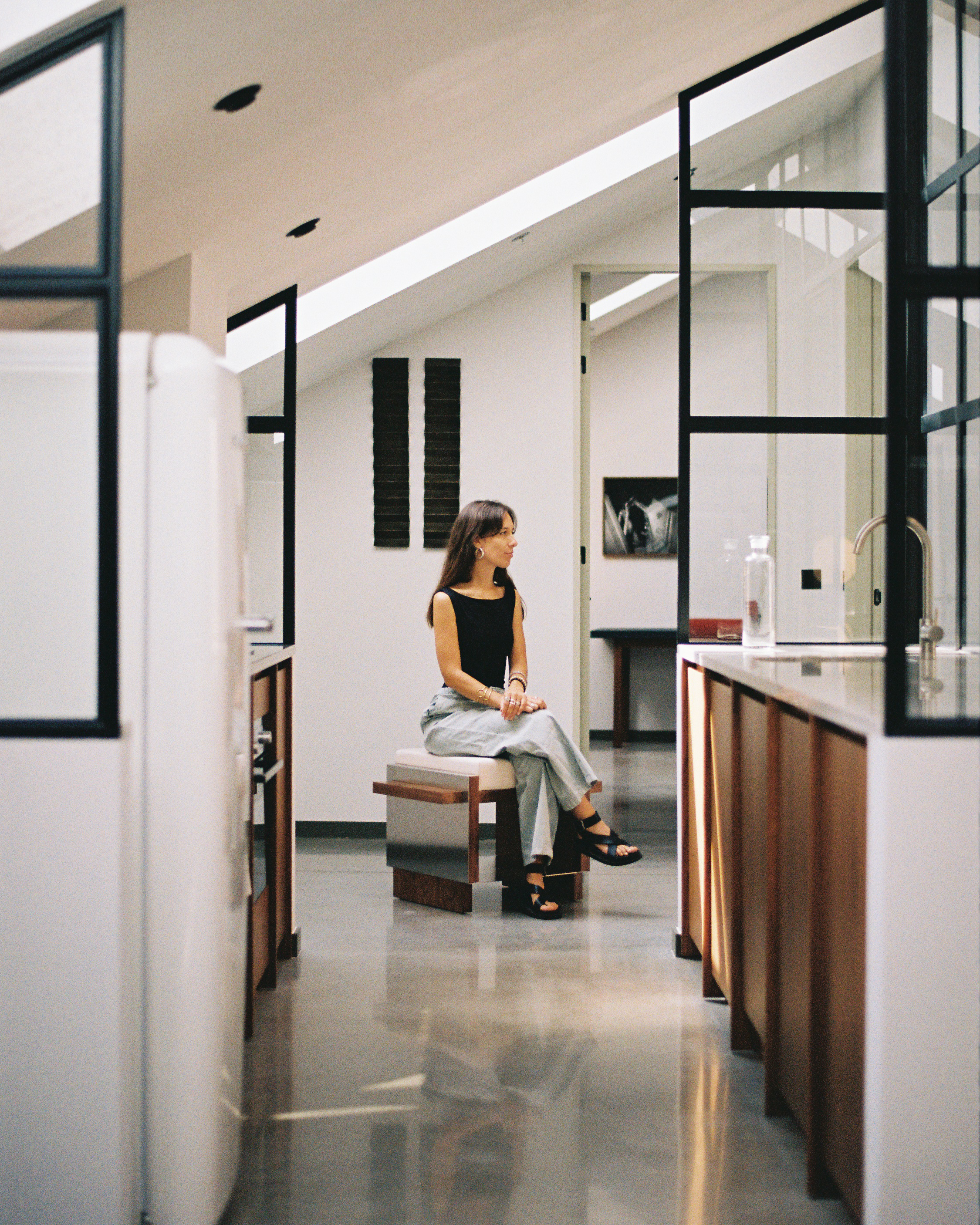Spaces Within Spaces: An Architectural Dialogue in Object and Furniture Design
SDF ©Bernardo Fernandes
The concept of spaces within spaces has been a quiet yet powerful thread running through my work. It is not only about designing objects but about creating micro-environments—forms that embody the essence of architecture, structuring the space around them rather than merely occupying it. My practice is rooted in the idea that objects can hold spatial weight, shaping perception and defining their own logic within a given environment.
My main inspiration often comes from late 20th-century Portuguese architecture, a period characterized by a thoughtful exploration of spatial depth, light, and materiality with a sense of measured modernity. Architects such as Fernando Távora, Viana de Lima, José Carlos Loureiro, and Luís Pádua Ramos have had a profound impact on my approach to design. Their work, deeply embedded in the cultural and spatial fabric of Portugal, informs the way I think about structure, volume, and the interplay between solid and void.
A particularly emblematic reference in my daily life is the Conjunto Habitacional do Luso-Lima, designed by José Carlos Loureiro and Luís Pádua Ramos. This architectural landmark, located near my home, has been a constant source of inspiration. Every day as I pass by, I find a new line, a fresh perspective—something unexpected yet deeply resonant. It is a structure that continues to surprise me, offering endless opportunities for reinterpretation. In its fragmented volumes and interplay of planes, I see a multitude of objects floating within its spatial framework—each piece deconstructing mass and redefining boundaries. This daily exercise of observing and mentally dissecting the building fuels my creative process, allowing me to explore ways in which objects can encapsulate the same principles of depth, layering, and spatial dialogue.
©Maria Medici
This architectural dialogue is embodied in my signature piece, the B1 Stool. Emerging from a discourse that bridges the realms of artisanal and industrial, the B1 Stool stands as an object of inquiry, exploring new avenues for interpreting emerging design. It embraces the constructive ethos and materials associated with modernist architecture, drawing from architectural visuals and built heritage of the latter 20th century. The design features a commanding horizontal presence contrasted by the verticality of aluminum-veneered side structures. At a smaller scale, this architectural language articulates an open space as an interpretation of fenestration, rising from the base to facilitate the entry and circulation of light.
The B1 Stool exemplifies the fusion of materials—wood, metal, and upholstery—each contributing to how the object breathes within a space. Their tactile and sensorial qualities echo the way architecture invites us to move through it, to touch, to inhabit. By elevating objects to environments in themselves, my work seeks to challenge boundaries. In the end, spaces within spaces is an invitation to experience design as something immersive, where even the smallest detail can hold the weight of an entire landscape.
This exploration reflects my commitment to creating pieces that not only serve functional purposes but also enrich the spatial narratives they inhabit, fostering a deeper connection between object, space, and observer.
SDF ©Maria Medici
About the Designer
Sofia De=Francesco is a multidisciplinary designer based in Porto, passionate about blending traditional craftsmanship with modern industrial technologies. Drawing inspiration from Portugal’s rich artisanal heritage, Sofia's work showcases a profound appreciation for diverse manufacturing processes, where the synergy between designer, artisan, and industry creates beautiful and functional results. With a background in urban furniture design, she masterfully balances materials, textures, and forms, taking cues from Modernist architecture. SD=F creations are not just functional pieces of furniture but also artistic expressions with architectural significance, transforming objects into scaled spatial environments themselves.
Links: sofiadefrancesco.com | sofia_defrancesco








